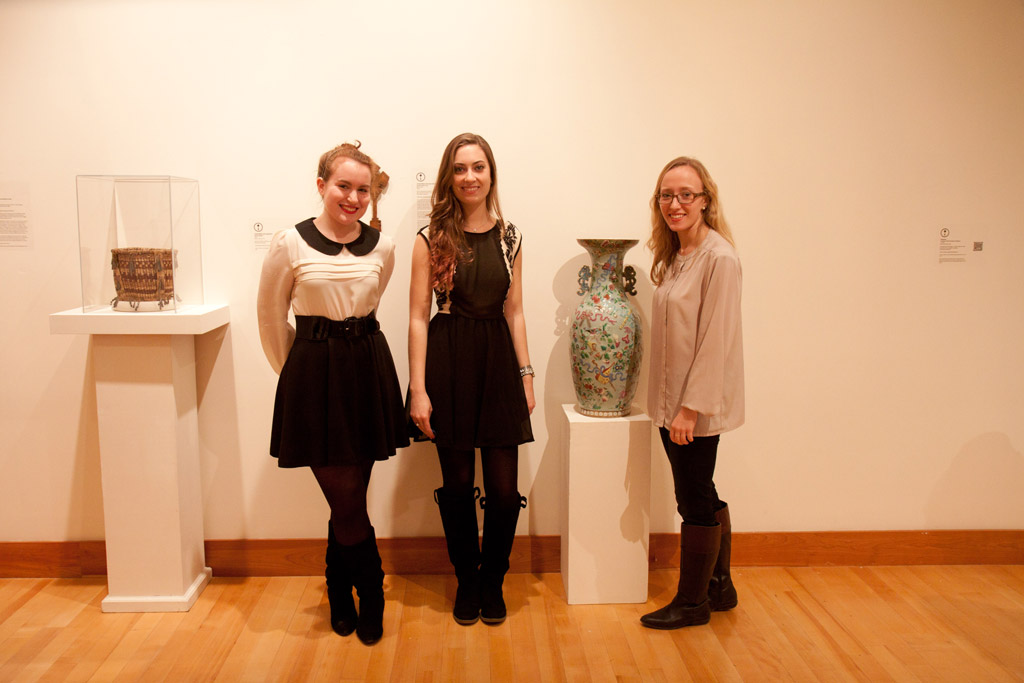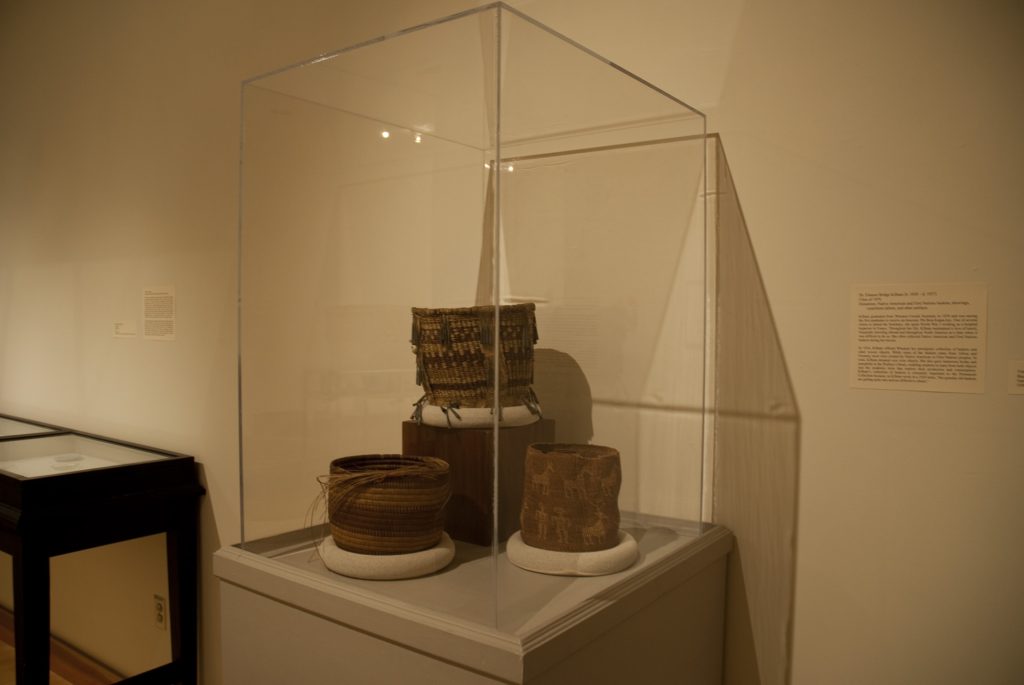Dr. Kilham’s collection of baskets and other Native North American objects are often viewed by Wheaton students for assignments. For example, students enrolled in Art History courses have conducted visual analyses of the motifs found on the baskets and used them to better understand the Native American Graves Protection and Repatriation Act (NAGPRA). One difference from 70 years ago, when Professor Cressey used the baskets in his courses, is that current faculty and students must now wear gloves to handle Dr. Kilham’s collection.
Since 2001, Wheaton College has tracked class use of objects in the collection database. Thanks to this practice and to initial archival research, which will continue in Summer 2017, we know that a variety of courses have used Dr. Kilham’s donation. It has also been viewed by summer students and by members of ARTHive, Wheaton’s Art History Club. Among the courses that have made use of her collection are:
- A Spring 1933 Anthropology course taught by Professor Paul F. Cressey
- SOC 402 in Spring 1953 taught by Professor Paul F. Cressey
- HIST 401 in Spring 2008 taught by Professor Kathryn Tomasek
- ARTH 112 during several iterations of the course
- ARTH 230 during several iterations of the course
- ANTH 301 in Fall 2014 taught by Professor Donna Kerner
- ARTH 334 in Spring 2012 taught by Professor Leah Niederstadt
- ARTH 335 during several iterations of the course
- REL 357 in Fall 2002 and Spring 2004 taught by Professor Barbara Darling-Smith
- FSEM 101 in Fall 2013 taught by Professor Leah Niederstadt
- FSEM 101 in Fall 2014 taught by Professor Joel Relihan
Objects from the Kilham Collection have also been displayed in exhibitions mounted in the Beard & Weil Galleries, including student-curated exhibitions. Kayla Malouin, Class of 2010, curated Collection Reflection (pdf) in Spring 2010; and the exhibition featured 3 Kilham Collection baskets. Several objects from Dr. Kilham’s donation were also exhibited in 100 Years, 100 Objects, a Fall 2012 exhibition curated by students enrolled in ARTH 335: Exhibition Design.
-Alivia Cross, Class of 2019
NAGPRA Compliance
On November 16, 1990, President George H. W. Bush signed into law the Native American Graves Protection and Repatriation Act, which is more commonly known by the acronym NAGPRA. According to the National Parks Service, which is charged with implementing the law, NAGPRA “address the rights of lineal descendants, Indian tribes, and Native Hawaiian organizations to Native American cultural items, including human remains, funerary objects, sacred objects, and objects of cultural patrimony.” All public and private institutions that receive federal funding are required to comply with the law. As an institution that receives NEA, NEH, and NSF grants as well as federal work-study funds, Wheaton College is required to comply with NAGPRA. The process involves inventorying all Native American material owned by or on loan to the college and then publishing that inventory in the Federal Register.
Wheaton College is compliant with NAGPRA. That said, not all of the objects in Dr. Kilham’s collection are eligible for repatriation or restitution under the law, as many of them were created by First Nations peoples in Canada. In the past decade, only one NAGPRA inquiry has been received at Wheaton. In 2008, the Hydaburg Cooperative Association, a federally recognized Haida tribe in Alaska, requested an inventory of any NAGPRA-eligible objects or human remains held at the college and related to the Alaskan Haida. In responding to the request, Professor Leah Niederstadt, Curator of the Permanent Collection, informed the tribe that a hat and a wallet in the Permanent Collection are identified as belonging to the Haida cultural group; and she explained that both are believed to have been acquired by Dr. Kilham in British Columbia, Canada. They are, therefore, not NAGPRA-eligible.
Niederstadt regularly uses this request and Dr. Kilham’s collection as a case study to educate students in ARTH 230: Introduction to Museum Studies about NAGPRA, which recently celebrated its 26th anniversary.


